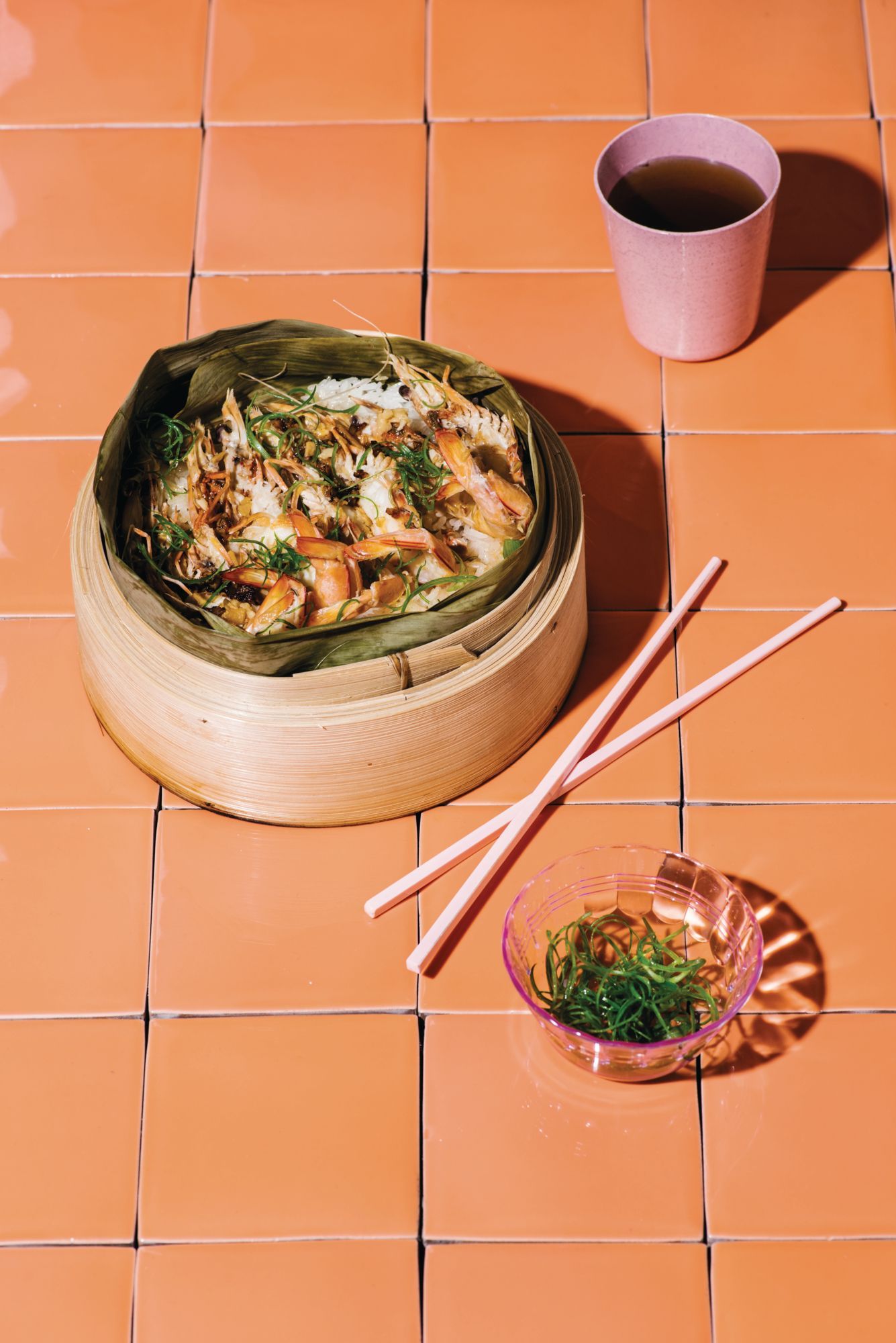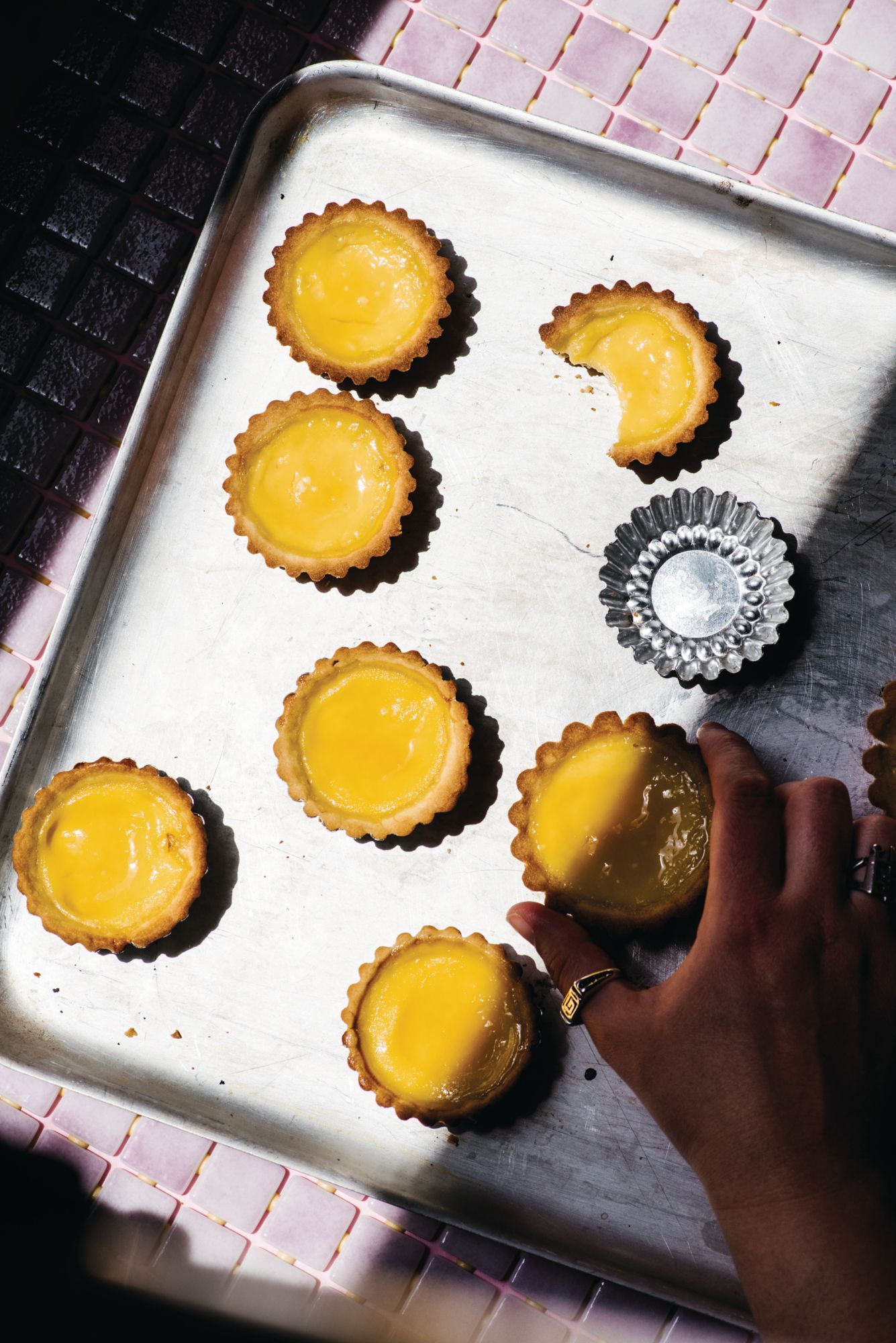Re-create Hong Kong street food favourites right at home in a few easy steps
Born in Hong Kong and now working in Singapore's LeVeL33 restaurant, chef ArChan Chan is bringing the flavours of her upbringing to a wider audience via her debut cookbook, Hong Kong Local. Filled with dozens of recipes that spotlight the city's characterful food culture, the book is an essential addition to your cookbook shelf if you want to learn how to recreate dishes that define Hong Kong. Below, we run three iconic recipes to try—find the rest in Hong Kong Local, published September 1 by Smith Street Books.
Related: ArChan Chan's Debut Cookbook Is A Love Letter To Hong Kong
1. Steamed rice with prawn and lotus leaf

What’s the best part of this dish? I would have to say the rice. It absorbs the flavour of the garlic, the prawn juices and the fragrance of the lotus leaf. The perfect simple yet tasty dish! Even simpler if you have chilled left over rice from the day before.
Serves 2
Ingredients:
200g (7 oz/1 cup) jasmine rice
100ml (3 1/2 fl oz) canola oil (or other cooking oil)
2 egg whites
1/2 teaspoon fine sea salt
1/4 teaspoon ground white pepper
8 garlic cloves, chopped
1 dried lotus leaf
4 fresh tiger prawns, peeled and deveined, halved lengthways
4 spring (green) onions, white parts thinly sliced into rounds, green parts julienned
2 cm (1 1/2 in) piece ginger, sliced
1 tablespoon roughly chopped red shallots
1/2 tablespoon roughly chopped coriander root
1 tablespoon Shaoxing rice wine
1/2 tablespoon caster (superfine) sugar
2 1/2 tablespoons light soy sauce
1/2 tablespoon oyster sauce
Method:
1. Cook the rice using a rice cooker. Set aside to cool.
2. Heat a large wok or frying pan over high heat. Add 2 tablespoons of the oil and as soon as it is hot add the egg white and stir for 5 seconds. Add the cooled rice and stir-fry until the rice is coated with the egg white. Season with salt and pepper, then transfer to a plate.
3. Wipe out the wok or frying pan, add another 2 tablespoons of the oil and heat over medium heat. Add 2 tablespoon chopped garlic and fry for 1 minute or until lightly golden. Scoop the garlic and oil into a small bowl and mix with the remaining chopped garlic.
4. Grab a large wok or frying pan with a lid that will fit a 25.5 cm (10 in) bamboo steamer basket. Add 2 litres (2 quarts) water and bring to the boil. Quickly blanch the lotus leaf so it turns soft, then remove.
5. Line the bamboo basket with the lotus leaf, then spoon in the rice and top with the eight prawn halves, meat side up. Spoon over the garlic mixture. Fold the lotus leaf over so it covers the prawns and rice. Bring the water in the wok or pan to the boil again, then steam the prawns for 10 minutes.
6. Meanwhile, heat the remaining 1 tablespoon of the oil in a small frying pan over medium heat, add the sliced spring onion whites and the ginger, shallot and coriander root and saute for about 1 minute or until fragrant. Add the Shaoxing wine, sugar and 2½ tablespoons of water. Bring to the boil, then reduce the heat and simmer for 30 seconds. Remove from the heat and stir in the soy sauce and oyster sauce.
7. Open up the lotus leaf, pour over the sweetened soy sauce and garnish with the spring onion greens. Serve immediately.
Related: The Cookbooks We Keep Going Back To

